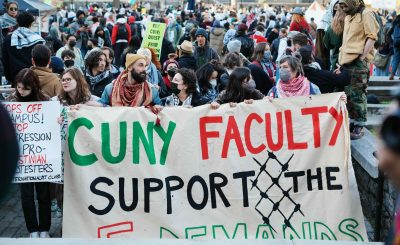Jennifer Henriquez
It is only in the fourth month of year 2020, and the world is frantically bracing themselves against the lethal pandemic, coronavirus (Covid-19). In order to prevent this menacing disease from spreading at a higher speed, NYC has taken initiatives such as cleaning the MTA every 72 hours, encouraging social distancing, and even providing more food stamps and free school lunch for students. In addition, the United States has declared a traveling ban for certain parts of Europe, large mass events have been cancelled, and colleges and public schools have shifted to online classes in replacement of physical classes.
By staying informed and taking the right measures, many are prepared to face this obstacle with the best of their abilities. However, don’t you wonder about those who don’t have the means to buy hygienic supplies or proper food at the moment? Those who can’t even speak to a doctor, or perform a self-quarantine because they don’t have a home? While the rest of the world take the measures needed to stay safe and healthy, how are homeless people being assisted during the coronavirus outbreak?
Approximately 553,000 people were experiencing homelessness according to the US Department of Housing and Urban Development’s Annual Homeless Assessment Report, and this is only in a single night. Over half a million people are on the streets right now, with zero protection. According to The Washington Post, “Homeless experts and some federal housing officials are sounding the alarm that the patchwork of government efforts to address the coronavirus outbreak risks leaving out one group of acutely vulnerable people: the homeless.â€
Very little has been said by Congress over how homeless people are going to be protected, and informed on recent events. Although shelters are working their best on obtaining as much beds and space for people without a shelter as possible, it still isn’t enough to provide them with safety. Issues such as emergency funding aimed to aid the homeless have been left in the blue. Even after providing these people with a shelter, shelters will be so overpopulated and will therefore require more hygienic supplies, some of which are scarce at the moment, and of course more food- and where will the funding for this come from?
In addition to this, those who are working in New York shelters right now are also not being given proper protection. According to journalist Carl Campanile and The New York Post, “Three clients at Pam’s Place, a shelter for women in Long Island City, were ill and coughing on Sunday, seeking medical attention. Security officers accompanied them in the shelter’s lobby after calling EMS — without the protection of face masks.â€
Maybe it’s time, as a society, we keep in mind those who are vulnerable in this time of crisis, and set aside a backpack with supplies that may help a homeless person right now. However, how much can a backpack with hand sanitizer, face masks, soap, and canned food last? What will it do against this sometimes-mortal disease? Absolutely nothing. It’s only a matter of time before that little “backpack†runs out, and it in no way fully protects an individual that lives on the streets against coronavirus. People without a shelter need the most help they can receive immediately, and we can demand that. You can reach the Department of Homeless Services through their contact number: (212)361-8000/ (718)675-3353 to question and demand action to be taken in order to protect homeless people. Don’t hesitate to call your local shelters and ask what you can contribute with, even if it is a little. The goal isn’t to just give hygienic and survival supplies to the homeless. The goal is to get them in a shelter, out of the streets, and away from danger or from being a danger to the public health.


